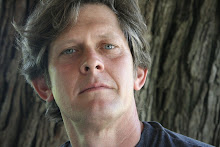

A holistically planned sustainable development is taking shape in Salem, Oregon – the Pringle Creek Community.
This community features a walkable design, dedicated green space, community gardens, a village commercial center, super-green construction, and environmentally friendly paving on 32 acres of natural woodland.
True to the spirit of sustainable design, the Pringle Creek Community is expressly non-stylistic, instead making design decisions based on a set of over-riding principles.
1. Build efficiencies by building green
2. Celebrate the natural environment
3. Encourage social diversity
4. Activate the local economy
5. Conserve and reuse natural materials
6. Smart transportation and movement
As an extension of these principles, Pringle Creek has established a set of 35 sustainable design goals further articulating and codifying the design ethic. From the community’s website:
http://www.pringlecreek.com/35sustainablegoals.htm
Comprehensive sustainability plans like this do not happen by accident. Sustainable Development Inc., headed by Don Myers, has been engaged in a conscious effort to build green since buying the 32 acres in 2004. The developer brought in Opsis Architecture, a Portland firm specializing in green design, to articulate the vision.
A couple of high points.
Roads in the community, all flanked by 5 foot sidewalks, are constructed of “porous” or “pervious” paving, a technology designed to allow the passage of water through the paving and back into the soil. Almost all paving used today is impervious to water, thus creating stormwater run-off problems typically managed by expensive, intrusive (and always un-natural) engineering efforts. This, according to the developer, is the largest residential project in the US to utilize porous paving.
Recently, a model home was constructed embodying the neighborhood’s design goals. This home, amazingly, graded out as the highest rated LEED Platinum home in the United States. The home incorporates solar energy, geothermal heating and cooling, as well as a comprehensive array of passive environmental elements.
The rub? A $432,000 price tag for this 1460 square foot home - that's almost $300 per square foot. Not exactly what I would call "affordable" but give credit for the herculean effort.
For more on the community, visit their website at:
http://www.pringlecreekcommunity.com/







No comments:
Post a Comment